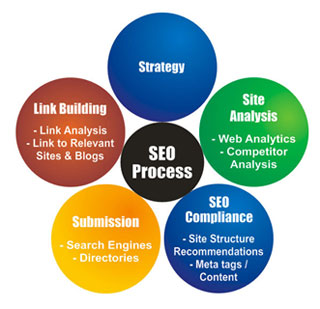 You know that thing people say about a trend; how it always changes like some fickle-minded aunt who can’t decide which hat to buy. A trend is usually associated with fashion, but it exists in many other fields too.
You know that thing people say about a trend; how it always changes like some fickle-minded aunt who can’t decide which hat to buy. A trend is usually associated with fashion, but it exists in many other fields too.
For instance, the SEO we know today is the result of trends dictated by major players like Google, which sets a whole series of events in motion after every time it makes changes to its algorithm.
After the initial release, experienced speculators predict the extent of the update’s impact on site rankings. Then, countermeasures are suggested around to help people weather the storm; if not avoid it entirely. Finally, online marketing companies will scramble for solutions before clients start noticing their site has fallen off page 1 of the SERPS.
Now, you may be wondering, ‘where’s the trend there?’. Google’s algorithm updates are hardly new. They’ve been using black-and-white animals to represent these tweaks since 2011.
What causes all the excitement is the fact that each upgrade version hones in on a different target. Before it was rooting out link farms, now it’s all about fighting web spam. As search becomes more sophisticated, online marketers are holding their breath, excited to know what’s next.
While Penguin 2.0 is big on quality content, aesthetics should not be forgotten about either. After all, a great website must have equal parts of style and substance.
Creating web design with SEO value is usually a developer’s domain. Nevertheless, it’s usually placed too far down the list, so much so that it isn’t prioritised anymore.
Despite the internet’s proliferation, some business owners still don’t understand the importance of a web resource. If global expansion is part of your entrepreneurial plans, establishing an online presence is necessary. A well-made website will usher your brand forward and get customers interested.
Ensure that you have a top-notch website by avoiding these pitfalls.
Theme and Content
1. Failing to communicate your intention quickly
With net users being bombarded with steady information, you have mere seconds to catch their eye. Show your audience what you can offer immediately. Avoid exhaustive talk about company goals. Employ strong language and active sentences to get your point across clearly. Give site visitors a reason to stay, and do it quickly.
2. The absence of a clearly defined call to action
Always define your website’s target, whether it’s gathering data or selling a product. Place your call-to-action (CTA) phrase in the middle, preferably above the fold of your landing page. Resist resorting to generic CTA statements like ‘click here’ or ‘buy now’. Be more creative or add incentives to make your goods more enticing. Again, communicate in the active voice.
3. Not zeroing on the target audience
Before you create the website, know your target audience. Abandon the cherished notion that your online shop is for everyone. While it’s true that random people will get the chance to view it, only a fraction of them is bound to show genuine interest in your photography services or next week’s car boot sale. Figure out who your niche audience is and cater specifically to their needs.
Design and Layout
4. Forgetting to highlight essential website features
Highlight your site’s important features. Don’t bury them in an effort to make your site look clean. When a site visitor still has to search for website features, you shouldn’t have integrated them in the first place.
5. Cluttering the landing page with unnecessary badges
Of course, awards and recognitions need to be mentioned. They denote excellence. Don’t overdo it though as it can negatively influence your site’s overall effectiveness. A cluttered landing page makes your online shop look amateurish, so confine the badges to the About Us page. Better yet, create a separate page where you can list them all.
6. Missing search box
The search box isn’t just an important feature for e-commerce sites. It is a crucial ingredient to increasing your website’s user-friendliness. It makes seeking information much easier.
7. Poor navigation
A detailed blog or info site won’t amount to much if its functionalities are poor. The navigation should be done seamlessly, enabling users to find their way around quickly. There might be no defining standards on this, but consistency should be imperative.
8. Using hard-to-read fonts
A catchy web design concept will grab a visitor’s attention, but the ‘meat’ is what’ll make them linger. The text on your site should be easy readable.
9. Inconsistent interface design across web pages
Creativity is most impactive when done in moderation. Quell the urge to have a different look for each inner page. Consistency isn’t just for the navigational toolbar; it goes for all other aspects of the website as well.
10. Senseless content layout
No matter how impressively written your content, creating a haphazard layout can turn it into gibberish. Complement informative text with a sensible layout for easy reading.
11. Complicated Registration forms
Determining the amount of information you want to obtain from a customer or site visitor can be tricky. Stick to the basics (i.e. name, email address) unless asking other specific details are necessary.
In conclusion, a solid online presence can be achieved through combining worthwhile content and thoughtful design. Always consider your audience so you’ll have a resource that will serve them best.

